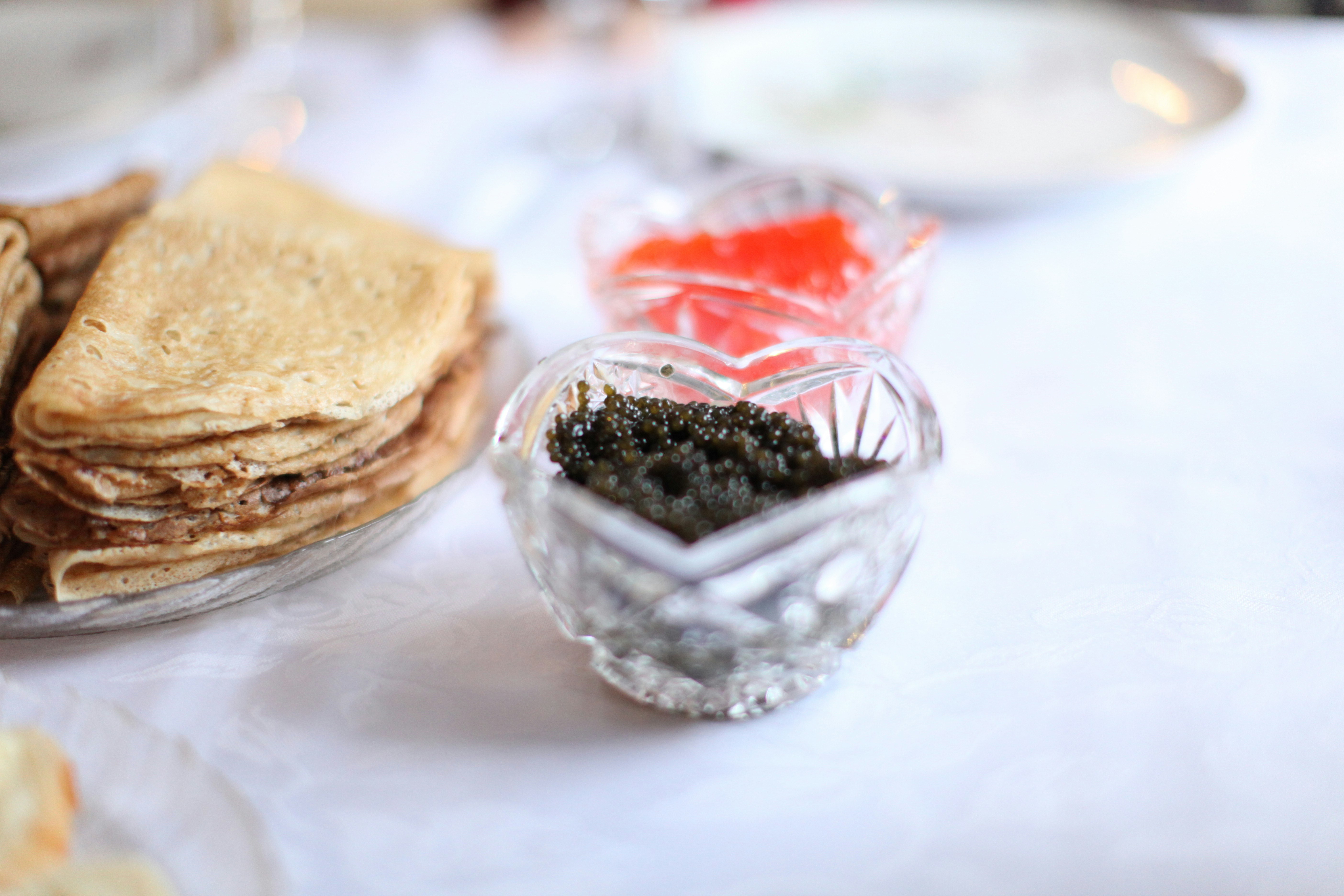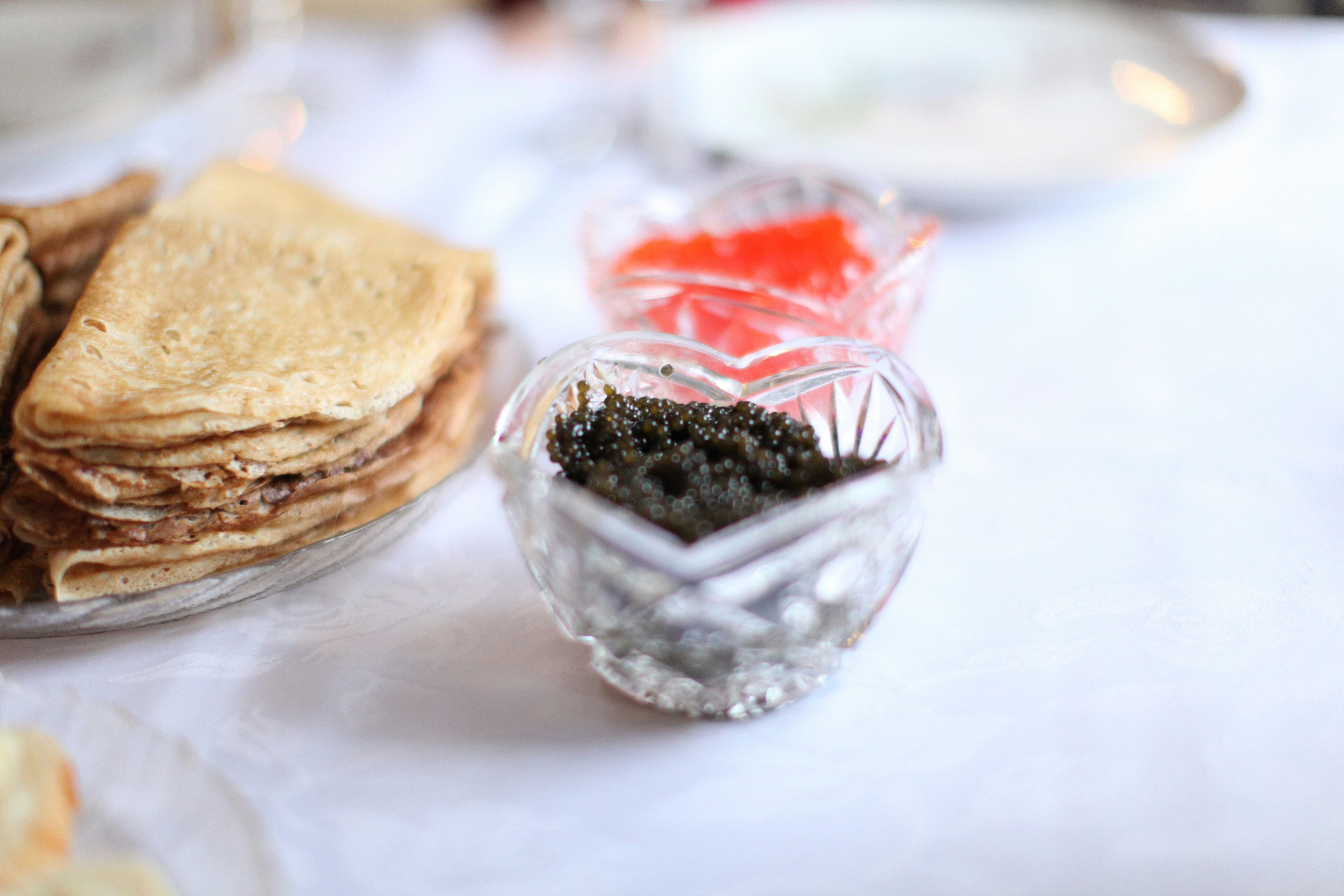Introduction to Russian Caviar
Russian caviar, often regarded as the epitome of luxury and refinement, has a storied past that dates back centuries. This delicacy, synonymous with opulence and indulgence, played a significant role in the courts of Russian tsars, who prized it as a symbol of their immense wealth and power. The allure of Russian caviar has endured through the ages, maintaining its status as a coveted gourmet treat revered by connoisseurs worldwide.
The historical significance of Russian caviar is deeply entrenched in the traditions of the Russian aristocracy. During the reign of the tsars, caviar was not merely a food item but a cultural emblem, often served at lavish banquets and royal celebrations. Its association with the Russian elite helped cement its reputation as a luxury delicacy, a status it retains to this day.
There are several types of caviar native to Russia, each with distinct characteristics and flavors. Beluga, Osetra, and Sevruga are among the most renowned varieties, each derived from different species of sturgeon. Beluga caviar, known for its large, delicate eggs and buttery taste, is often considered the pinnacle of caviar quality. Osetra caviar, with its medium-sized eggs and nutty flavor, offers a more complex tasting experience, while Sevruga caviar, featuring smaller eggs and a more pronounced salty flavor, is cherished for its distinctive taste profile.
Sturgeons, the ancient fish from which caviar is harvested, are primarily found in the Caspian Sea, which borders Russia. These prehistoric fish have been a source of caviar for millennia, their roe harvested and processed to create the exquisite product that graces the tables of the world’s elite. The sustainability and conservation of sturgeon species have become increasingly important, ensuring that this luxurious delicacy can be enjoyed by future generations.
The History and Heritage of Russian Caviar
The history of Russian caviar is as rich and textured as the esteemed delicacy itself. Tracing its origins back to ancient times, caviar has long been held in high regard. The earliest records of caviar consumption date back to the Greeks and Persians, who prized the roe of sturgeon for its unique flavor and perceived health benefits. However, it was in Russia where caviar truly found its place as a symbol of opulence.
During the Russian Empire, caviar ascended to the heights of culinary luxury, becoming synonymous with the extravagance of the tsars. The Russian aristocracy, captivated by its exquisite taste, incorporated caviar into their lavish feasts and banquets. Ivan the Terrible and Peter the Great were known to be particularly fond of caviar, often serving it at state dinners and diplomatic gatherings. This period cemented caviar’s reputation as a delicacy reserved for the elite.
One notable historical anecdote involves Catherine the Great, who is said to have had a penchant for caviar. She not only indulged in the delicacy herself but also used it as a diplomatic tool, sending gifts of caviar to foreign dignitaries to showcase Russia’s abundance and sophistication. This tradition of gifting caviar as a gesture of goodwill continues to this day, underscoring its enduring cultural significance.
Over the centuries, the methods of harvesting and consuming caviar have evolved. Traditional techniques involved the careful extraction of roe from sturgeon in the Caspian and Black Seas. This roe was then salted and packed for preservation, allowing it to be enjoyed year-round. The process of curing caviar, known as “malossol,” which means “lightly salted” in Russian, became a hallmark of Russian caviar, enhancing its flavor without overpowering its natural essence.
Today, the legacy of Russian caviar endures, celebrated not just for its taste but also for its deep cultural roots. This storied history continues to be a testament to the timeless allure of caviar, a delicacy that has transcended centuries to remain a symbol of luxury and refinement.
Sturgeon Species and Caviar Varieties
Russian caviar, often dubbed the “Delicacy of the Tsars,” is derived from several species of sturgeon native to Russian waters. Among these, the Beluga, Osetra, and Sevruga sturgeons are the most renowned, each contributing to distinct caviar varieties with unique characteristics.
The Beluga sturgeon, one of the largest and most prized, produces caviar known for its large, delicate eggs. Beluga caviar is celebrated for its rich, buttery flavor and smooth texture. The eggs are typically light to dark gray, sometimes even pearlescent, and are the largest among sturgeon caviar types, making it a luxurious choice for connoisseurs.
Osetra sturgeon offers a different profile with medium-sized eggs that range in color from golden to dark brown. Osetra caviar is highly esteemed for its nutty, briny flavor and firm texture. The diversity in egg color is often linked to the age and diet of the sturgeon, providing a varied sensory experience that many aficionados appreciate.
Sevruga sturgeon, smaller in size compared to Beluga and Osetra, produces the most abundant caviar. Sevruga caviar eggs are smaller and typically dark gray. Known for their strong, pronounced flavor, Sevruga caviar has a crisp texture that appeals to those who prefer a more intense taste.
Environmental and ecological considerations are pivotal in sturgeon farming and caviar production. Overfishing and habitat destruction have significantly impacted wild sturgeon populations, leading to increased reliance on sustainable aquaculture practices. Modern sturgeon farms in Russia aim to balance high-quality caviar production with the conservation of sturgeon species. These practices include regulated breeding programs, habitat restoration efforts, and strict adherence to international wildlife trade regulations.
By understanding the distinct qualities of Beluga, Osetra, and Sevruga caviar, and recognizing the importance of sustainable farming, one can truly appreciate the rich heritage and responsible practices behind this esteemed delicacy.
The Art of Caviar Harvesting and Production
The process of caviar harvesting and production is an art form that blends traditional methods with modern innovations to ensure the highest quality and sustainability. The journey begins with the sturgeon, a fish revered for its roe. Traditionally, caviar harvesting involved the sacrifice of the fish to extract the eggs. However, advancements in technology have introduced non-lethal methods, such as the cesarean technique, which allows for the extraction of eggs while preserving the life of the sturgeon.
Once the sturgeon are mature and ready for harvesting, experts, known as ‘caviar masters,’ play a crucial role in the process. These highly skilled professionals meticulously examine the eggs for their size, color, and texture. The expertise of caviar masters is indispensable, as their assessments determine the grading and, ultimately, the market value of the caviar. The eggs are then carefully cleaned, salted, and packed, with each step designed to maintain the delicate nature of the product.
Modern production techniques have significantly improved the sustainability of caviar. Aquaculture farms now raise sturgeon in controlled environments, reducing the pressure on wild populations. These farms adhere to strict guidelines to ensure the fish are raised in optimal conditions, resulting in high-quality caviar. Furthermore, ethical practices, such as the use of non-lethal harvesting methods, reflect the industry’s commitment to sustainability.
Sustainable practices extend beyond the harvesting process. The caviar industry is increasingly focused on environmental conservation and responsible sourcing. This commitment is essential to preserving the sturgeon population and protecting natural habitats. By adhering to sustainable practices, the industry not only ensures the future supply of caviar but also demonstrates a dedication to ecological responsibility.
The art of caviar production is a testament to the balance between tradition and innovation. From the careful harvesting of sturgeon eggs to the expertise of caviar masters and the commitment to sustainability, each step in the process is designed to produce a delicacy that is both luxurious and ethically sourced. This meticulous approach ensures that Russian caviar remains a symbol of elegance and refinement, appreciated by connoisseurs around the world.
Caviar holds a revered place in Russian cuisine, often served with a sense of occasion and tradition. In Russian culinary practice, caviar is typically presented with blinis, small pancakes made from buckwheat or wheat flour. These blinis are often accompanied by a dollop of sour cream, which balances the richness of the caviar. Another traditional pairing includes boiled eggs and finely chopped onions, which complement the caviar’s unique flavor profile.
In the realm of contemporary Russian recipes, caviar continues to evolve. Modern chefs creatively incorporate it into dishes, ranging from appetizers to main courses. Caviar can be found topping canapés, enhancing the flavors of seafood dishes, or even as a luxurious garnish for creamy soups. Despite these innovations, the essence of caviar remains unchanged, retaining its status as a symbol of luxury and culinary excellence.
Culturally, caviar is deeply intertwined with Russian celebrations and social gatherings. It is a staple at festive occasions such as New Year’s Eve and weddings, where it symbolizes prosperity and good fortune. The presence of caviar on the table underscores the importance of the event, elevating the dining experience for guests. This cultural significance extends to modern fine dining as well, where high-end restaurants continue to feature caviar prominently on their menus, often paired with vodka or champagne to enhance its delicate flavors.
Properly serving and enjoying caviar requires attention to detail. It is best served chilled, but not frozen, to preserve its texture and taste. Non-metallic utensils, such as mother-of-pearl spoons, are recommended to avoid any metallic taste that can alter the caviar’s natural flavor. When consuming caviar, it is customary to savor it slowly, allowing the beads to burst gently on the palate, releasing their nuanced flavors. By adhering to these tips, one can fully appreciate the sophistication and heritage of Russian caviar.
Global Influence and Modern Trends in Caviar Consumption
Russian caviar, long heralded as a delicacy of the tsars, continues to hold a prestigious place in global gourmet cuisine. Its rich history and unparalleled quality have cemented its reputation among connoisseurs and chefs worldwide. The allure of Russian caviar extends beyond its luxurious taste and texture; it symbolizes culinary excellence and sophistication. This global popularity has led to its integration into diverse culinary traditions, making it a staple in fine dining establishments from Paris to Tokyo.
In recent years, the caviar industry has seen a shift towards more sustainable and ethical farming practices. Overfishing and environmental degradation have posed significant threats to wild sturgeon populations, prompting both producers and consumers to seek more sustainable alternatives. Aquaculture, or fish farming, has emerged as a viable solution, with many farms adopting eco-friendly methods to ensure the longevity of sturgeon species and the quality of the caviar produced. This trend towards sustainability is not just a market response but a necessary evolution to preserve the delicate balance of aquatic ecosystems.
Despite these advancements, the caviar industry faces ongoing challenges. Overfishing remains a critical issue, as illegal poaching continues to deplete wild sturgeon stocks. In response, international regulations and enforcement mechanisms have been strengthened to protect these endangered species. Moreover, environmental concerns such as water pollution and climate change further complicate the industry’s efforts to maintain sustainable practices. These challenges underscore the importance of continued innovation and vigilance in caviar production and conservation efforts.
Looking ahead, the future of Russian caviar in the global market appears promising but contingent upon the industry’s ability to adapt to these challenges. The rise of ethically farmed caviar presents an opportunity to balance luxury and sustainability, ensuring that this coveted delicacy can be enjoyed by future generations. As consumer awareness and demand for responsibly sourced products grow, the caviar industry must continue to evolve, embracing sustainable practices while maintaining the high standards that have made Russian caviar a symbol of culinary prestige.
Enter your email to get the Latest Updated Exploring News and Topics
Discover more from atozexplore.com
Subscribe to get the latest posts sent to your email.







